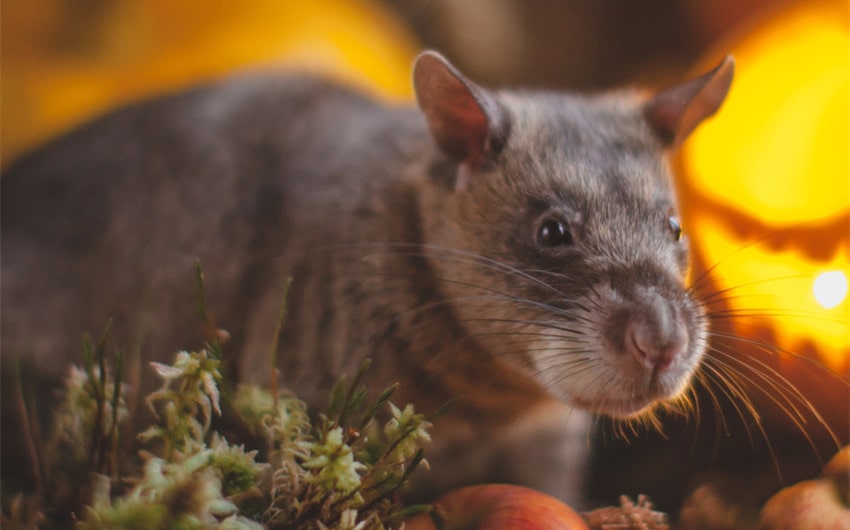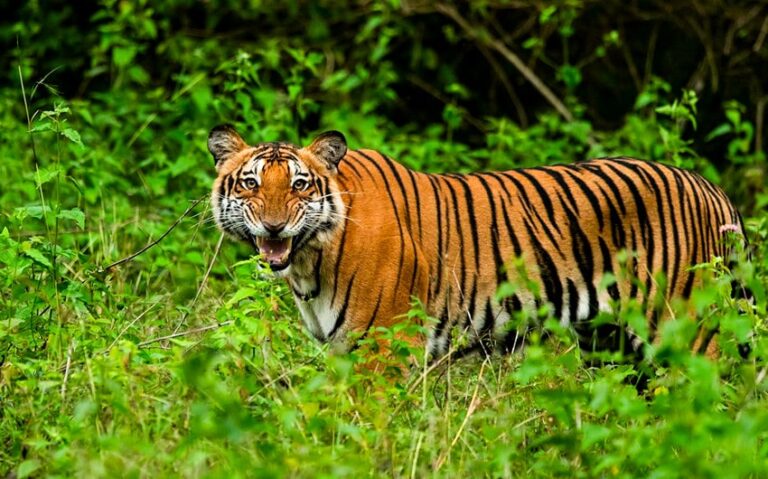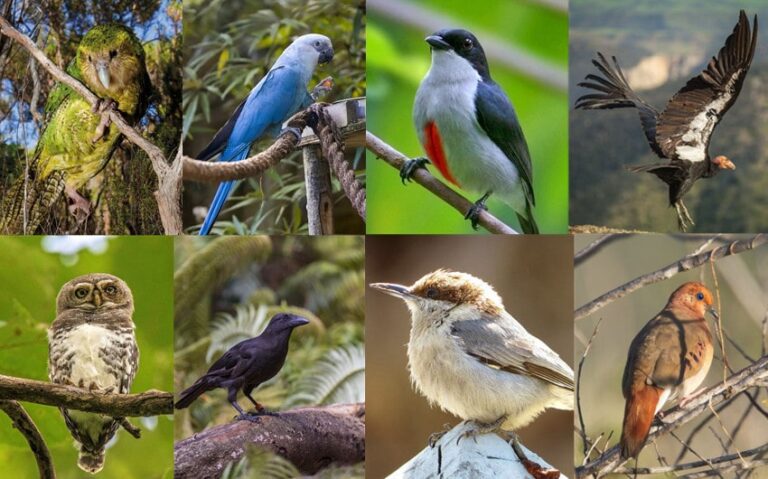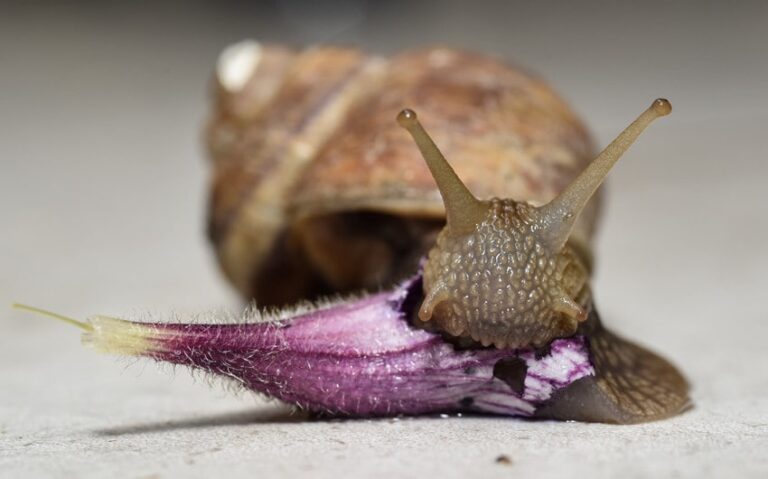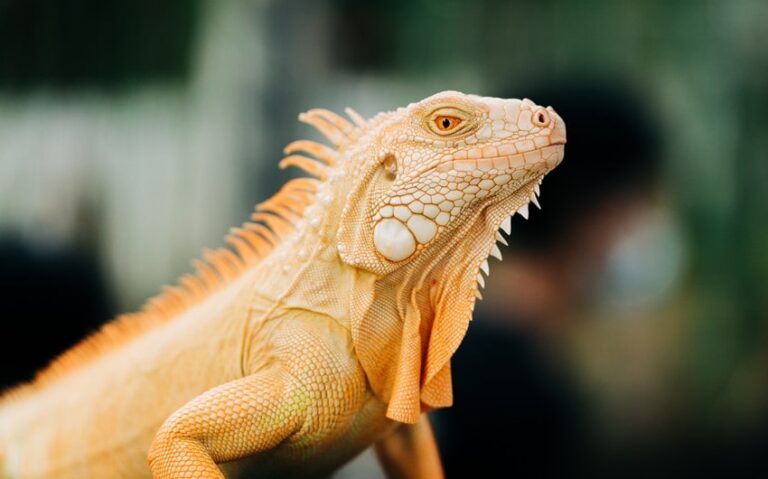The Largest Rat in the World: All You Need to Know
Have you ever wondered what the largest rat in the world looks like? Meet the Gambian Pouched Rat, a fascinating creature that can grow up to three feet long, including its tail. These rats are not your typical pests; they have unique features and surprising abilities. From their impressive size to their remarkable sense of smell, the Gambian Pouched Rat is an extraordinary animal worth learning about.
In this article, we’ll dive into their habits, habitat, and much more to understand what makes this giant rodent so special.
Gambian Pouched Rat: The Largest Rat
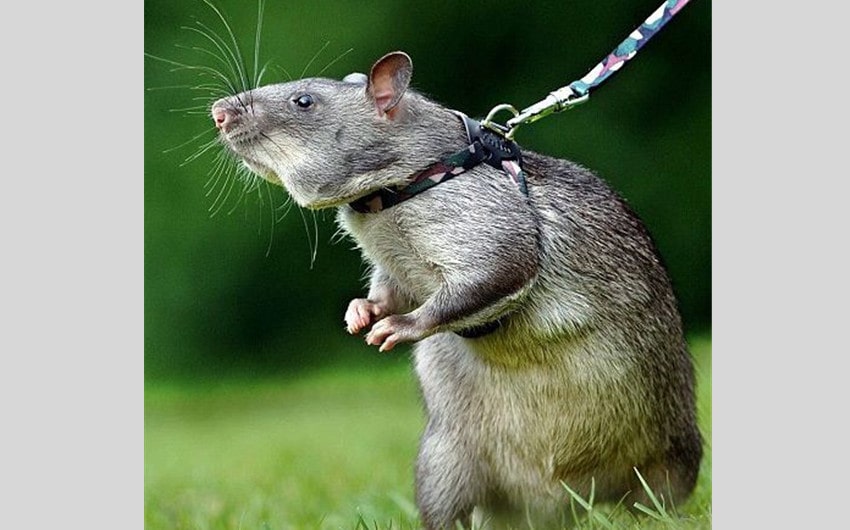
Image source: Pinterest
The Gambian Pouched Rat, also known as Cricetomys gambianus, holds the title of the largest rat in the world. These impressive rodents can grow up to three feet long, including their tail, and weigh as much as four pounds. Native to sub-Saharan Africa, they thrive in a variety of habitats, from forests to savannas.
What sets the Gambian Pouched Rat apart is not just its size, but its unique features and behaviors. They are named for their large cheek pouches, which they use to carry food and other items back to their burrows. Their keen sense of smell makes them excellent foragers, able to sniff out food sources from a considerable distance.
These rats are primarily nocturnal, spending their nights foraging and their days resting in underground burrows. Despite their size, they are agile climbers and can easily navigate trees and rocky terrain. Their diet is omnivorous, including fruits, seeds, insects, and small animals.
Diet and Feeding Habits
The Gambian Pouched Rat has a diverse and adaptable diet, making it a versatile survivor in various environments. Primarily omnivorous, these rats feed on a variety of foods including fruits, vegetables, nuts, seeds, and small invertebrates. They are known for their foraging skills and often gather food in their large cheek pouches to store in their burrows for later consumption.
In the wild, their diet largely depends on the availability of local resources, which can include anything from roots and tubers to insects and small reptiles. In urban areas, they might scavenge from human food sources, making them quite adaptable to different habitats.
Their feeding behavior is also quite intriguing. They have a habit of meticulously cleaning their food before eating it, and they can carry large amounts of food in their pouches to transport back to their nests. This hoarding behavior ensures they have a steady food supply, especially during scarce times.
Reproduction and Lifespan
The reproductive habits of the Gambian Pouched Rat are as fascinating as their dietary ones. These rats reach sexual maturity at about five to seven months of age. They are prolific breeders, with females capable of producing multiple litters each year. Each litter typically consists of two to four offspring, though larger litters can occur.
The gestation period for a Gambian Pouched Rat is about 27 to 42 days. After birth, the young are cared for by the mother and quickly grow, reaching independence within a few weeks. This rapid growth and high reproductive rate contribute to their ability to thrive in various environments.
In terms of lifespan, Gambian Pouched Rats can live up to eight years in captivity, although their lifespan in the wild is generally shorter due to predators and environmental challenges. In captivity, with proper care and nutrition, they can enjoy a long and healthy life, making them popular pets and valuable research animals. Their longevity and reproductive capabilities highlight their resilience and adaptability as a species.
Use in Detection Work
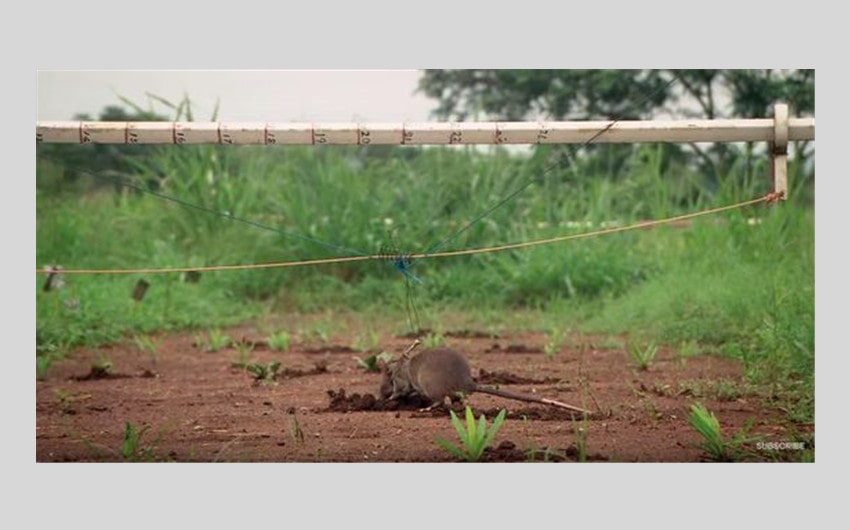
Image source: Pinterest
One of the most remarkable aspects of the Gambian Pouched Rat is its use in detection work, particularly for landmine detection and tuberculosis diagnosis. These rats have an extraordinary sense of smell, which has been harnessed for life-saving missions around the world.
Landmine Detection
Gambian Pouched Rats have been trained to detect landmines in post-conflict regions. Their light weight allows them to traverse minefields without triggering the explosives, making them an invaluable asset in landmine clearance operations.
The rats are trained through a process of reward-based conditioning, where they learn to identify the scent of explosives. Once trained, they can quickly and accurately locate buried landmines, significantly speeding up the demining process and reducing the risk to human deminers.
Tuberculosis Detection
In addition to their role in landmine detection, Gambian Pouched Rats are also used in the medical field to diagnose tuberculosis. Their acute sense of smell allows them to detect the presence of tuberculosis bacteria in human sputum samples.
Trained rats can screen a large number of samples in a short time, providing a rapid and cost-effective method of diagnosis, especially in resource-limited settings. This innovative use of Gambian Pouched Rats has proven to be a game-changer in tuberculosis control programs, helping to identify cases that might otherwise go undetected.
Interaction with Humans
The interaction between Gambian Pouched Rats and humans is multifaceted, ranging from their role as pets to their contribution to scientific research and public health.
As Pets
Gambian Pouched Rats have become popular pets in some regions due to their intelligence, social nature, and unique characteristics. They are known for their friendly demeanor and can be trained to perform various tasks, making them engaging companions.
However, their large size and specific care needs mean they are not suitable for every pet owner. Potential owners must be prepared to provide ample space, a varied diet, and mental stimulation to keep these intelligent animals happy and healthy.
In Research and Public Health
Beyond their use in detection work, Gambian Pouched Rats are also valuable in scientific research. Their large size and physiological similarities to other rodents make them suitable for various studies, including those related to nutrition, behavior, and disease. Their contribution to tuberculosis detection has had a profound impact on public health, particularly in countries with high TB burdens.
Challenges and Benefits
While the use of Gambian Pouched Rats has many benefits, there are also challenges associated with their interaction with humans. In some regions, they are considered pests due to their scavenging habits and potential to damage crops. Efforts to control their populations in these areas can sometimes conflict with their conservation and the beneficial roles they play.
Fascinating Facts About the Gambian Pouched Rat
The Gambian Pouched Rat is a remarkable creature with unique traits and behaviors that set it apart from other rodents. From their impressive size to their extraordinary sense of smell, these rats have captured the interest of scientists and pet enthusiasts alike. Here are some fascinating facts about the Gambian Pouched Rat:
1. Big Pouches for Big Snacks
The Gambian Pouched Rat has large, expandable cheek pouches that it uses to transport food. These pouches can stretch to hold substantial amounts of food, sometimes up to half the rat’s body weight. This unique adaptation allows the rat to gather and store food efficiently, ensuring it has a steady supply even during times of scarcity.
2. Super Sniffers
These rats have an extraordinary sense of smell, which is about 50 times more sensitive than that of a human. This keen olfactory ability makes them invaluable in detecting landmines and diagnosing diseases like tuberculosis. In landmine detection, a trained Gambian Pouched Rat can clear a 200-square-meter field in about 20 minutes, a task that would take a human with a metal detector up to four days.
3. Rat Giants
The Gambian Pouched Rat is one of the largest rat species in the world, with adults reaching up to three feet in length, including their tails, and weighing between 2.5 to 3 pounds on average. Some individuals can even exceed these measurements, making them true giants in the rodent world.
4. Smart and Social
These rats are highly intelligent and social animals. They live in groups and exhibit complex behaviors such as grooming, playing, and working together to forage for food. Their intelligence is evident in their ability to learn and remember tasks, making them trainable for various detection roles. Studies have shown that they can recognize human handlers and respond to their commands, demonstrating a high level of cognitive function.
5. Chatty Critters
Gambian Pouched Rats communicate using a variety of vocalizations, including squeaks, grunts, and hisses. These sounds are used to signal danger, attract mates, and maintain social bonds within their groups. Their vocal communication adds another layer to their complex social behavior and intelligence, making them fascinating subjects for behavioral studies.

